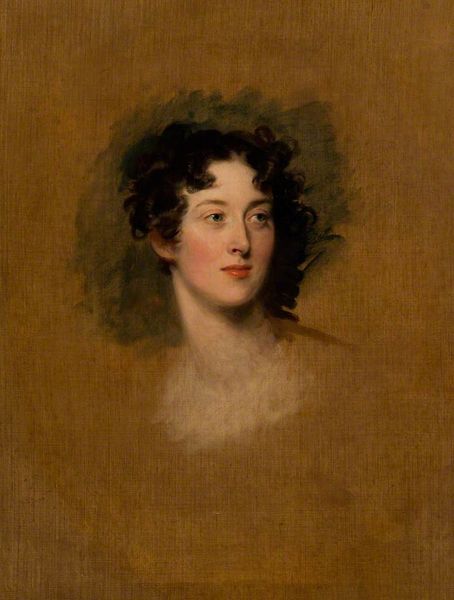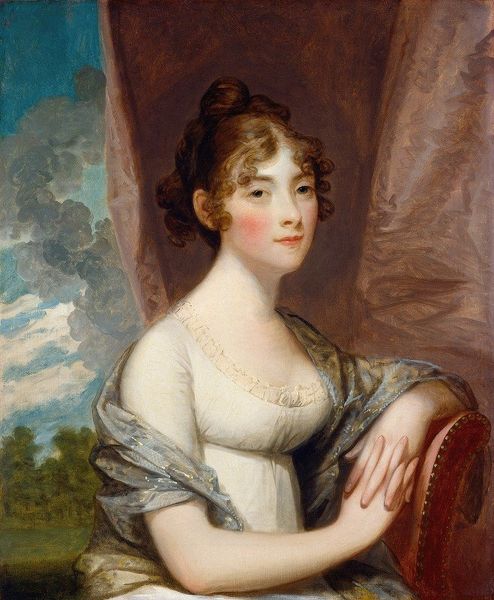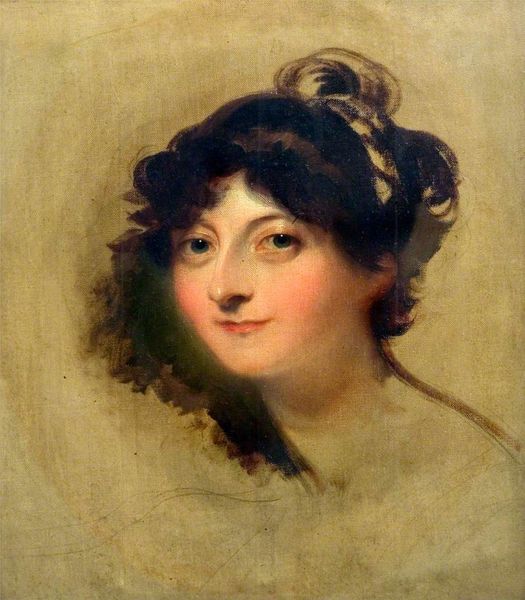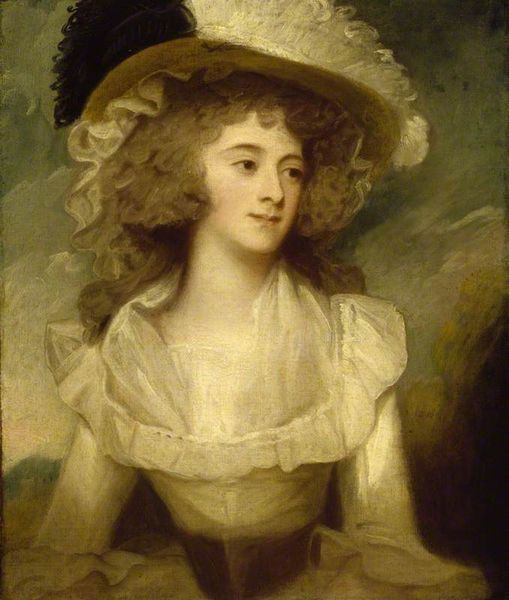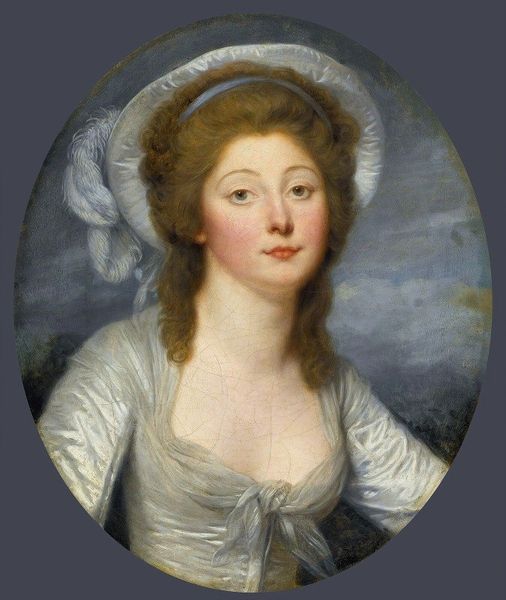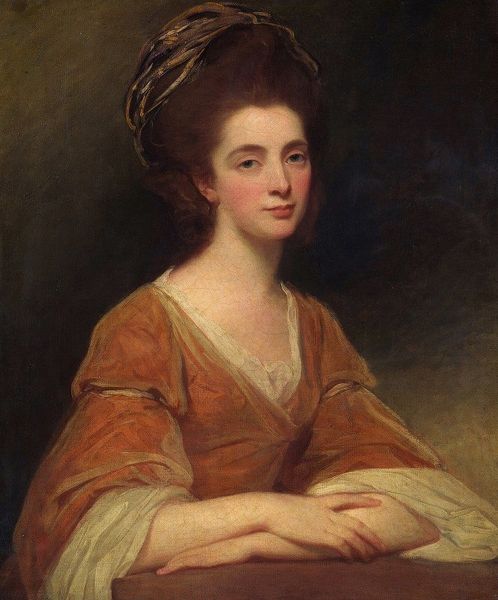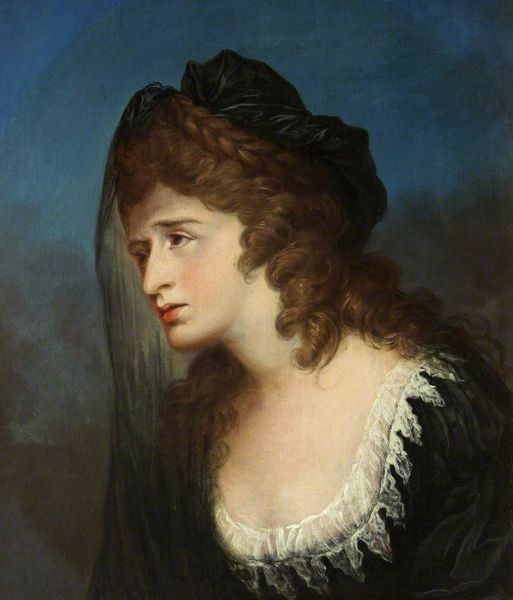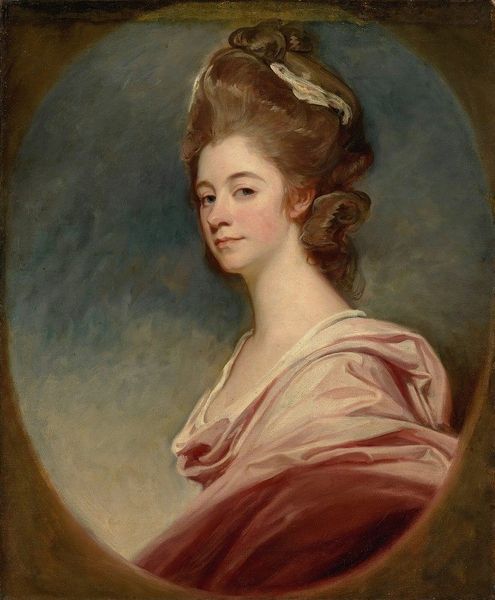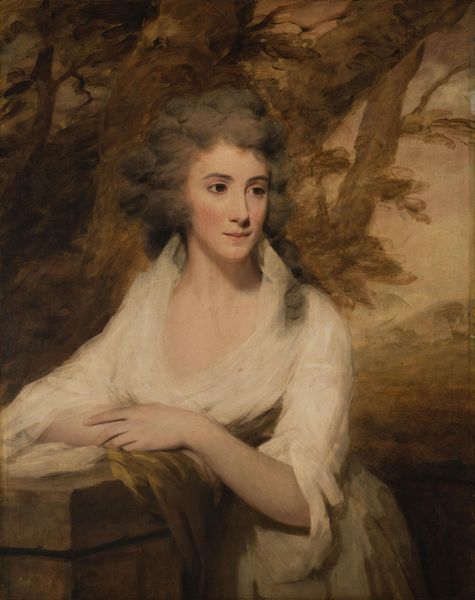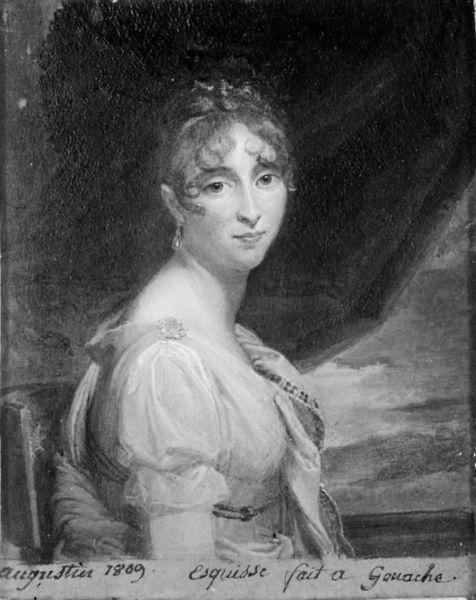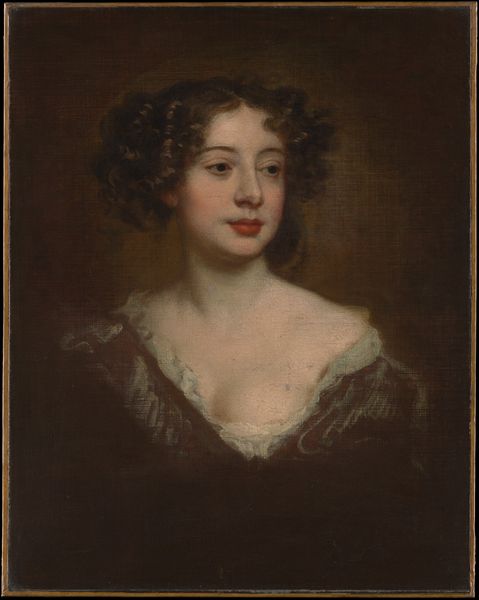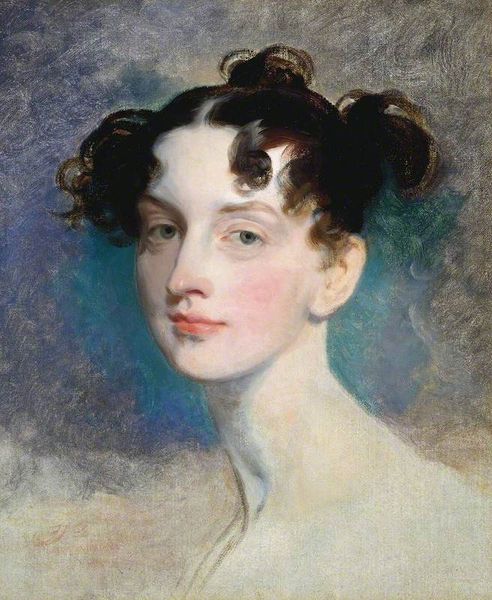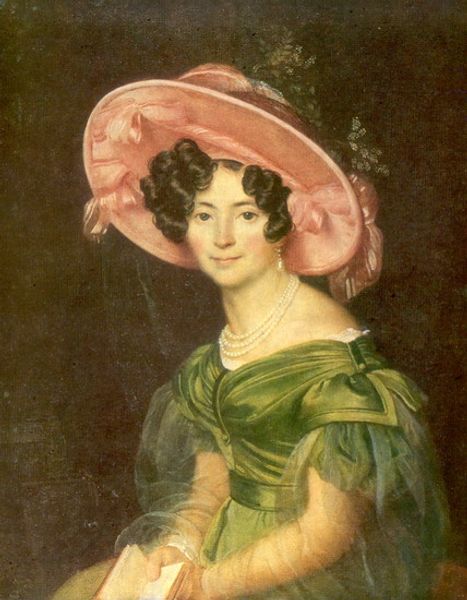
painting, oil-paint
#
portrait
#
painting
#
oil-paint
#
figuration
#
romanticism
Copyright: Public domain
Editor: So, this is Thomas Lawrence's "Lady Caroline Lamb," painted around 1827 using oil paint. The way she's situated amidst the blurry dark background gives the impression of a performer captured backstage or in between scenes. What kind of imagery strikes you in this portrait? Curator: The romantic symbolism is heavy, isn't it? Lawrence captures her at a transitional point. Notice the swirling darkness, the lack of firm outline; it suggests a kind of psychological undress, the vulnerability that comes with great passion. Do you see any tension in her gaze? Editor: Yes, there’s a pensiveness there, but also a sort of directness, a subtle challenge to the viewer. I guess I see confidence as well. Curator: Precisely. Consider the context. Lady Caroline was known for her scandalous affair with Lord Byron. This painting captures her after that storm, a moment of self-awareness, almost defiance, which comes from having weathered such a personal tempest. Do you feel that translates into how she has been framed? Editor: Yes, and there’s something about the haziness around her figure that almost softens the perceived drama, lending her a certain timelessness and ambiguity. Curator: I agree; the soft focus helps diffuse a precise narrative and allows space for subjective interpretation and the universality of human passions and heartaches. We carry these figures and their symbols with us through history. We read her face differently than they would have in 1827. Editor: I never considered the romanticized symbols of pain as a statement about female resilience, until now. Curator: Indeed. Every gaze back at the painting reflects our own current narratives.
Comments
No comments
Be the first to comment and join the conversation on the ultimate creative platform.
